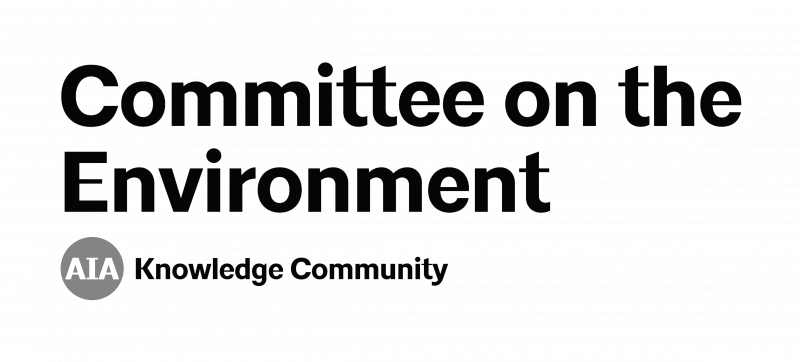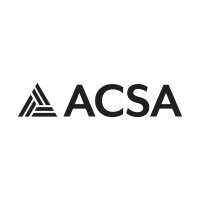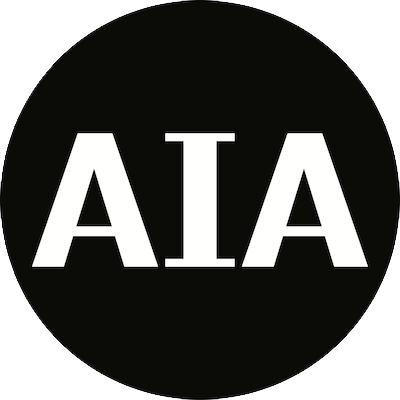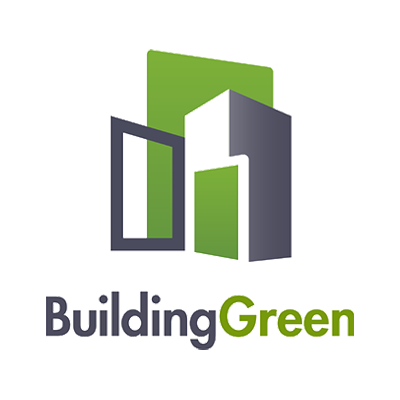Winners Announced
2021 COTE Competition
AIA COTE® Top Ten for Students
Program
The COTE Top Ten for Students Competition seeks compelling design submissions that meaningfully address the future impacts of climate change, imagine and illustrate a healthy, sustainable and equitable future. Emphasis is to be placed on achieving zero emissions, adapting to projected climate impacts, designing for resilience, and addressing social and environmental equity.
Entries will be judged on the success and innovation that the project has met the ten measures of the Framework for Design Excellence:
Framework for Design Excellence
Design for Integration
Sustainable design is an inherent aspect of design excellence. Projects should express sustainable design concepts and intentions and take advantage of innovative programming opportunities.
Narrative, Graphics & Metric
Narrative: Describe how sustainability strategies are incorporated into the overall design. What are the major environmental issues and goals? How does the building respond to the local climate, site and occupant comfort?
May include:
- Key environmental issues; how and why they became important priorities
- Key ecological goals and concepts for your project and how they were expressed in the design
- How sustainability measures led to a better overall project design
- Process of program analysis; resource efficiencies realized by innovative programming
- Efforts to “right size” the project and to reduce unnecessary square footage
- Project response to local climate, sun path, prevailing breezes, soil, hydrology, and seasonal and daily cycles through passive design strategies
- Description of internal versus external building loads with regard to building massing, orientation, fenestration/shading related to the sun’s path and prevailing winds
- Design strategies that reduce/eliminate the need for non-renewable energy resources
- How these strategies specifically shaped the plan, section, and massing
Suggested Graphics: Building section, or other appropriate diagram that demonstrates bioclimatic strategies and concepts. A profile of local climate that illustrates appropriate design strategies, or summary sustainability diagram (for building operations)
Metric: Percent of the year that occupants will be comfortable using passive systems
Design for Equitable Community
Sustainable design values the unique cultural and natural character of a given region.
Narrative, Graphics & Metric
Narrative: How does the design respond to the region where it’s located? How does the design promote regional and community connectivity? What steps are taken to encourage alternative transportation?
May include:
- How the design relates to the local context and to larger regional issues
- How the design promotes regional and community connectivity
- How the design promotes a sense of place, public space and community interaction
- How the design educates its users about the environmental strategies it employs
- Efforts to provide for those using transportation alternatives
- Site selection criteria to reduce automobile use and parking requirements.
Graphic: Open
Metric: Walk score: (from Walkscore.com) and/or urban networks diagram (walk, transport, etc.)
Design for Ecosystems
Sustainable design protects and benefits ecosystems, watersheds, and wildlife habitat in the presence of human development.
Narrative, Graphics & Metric
Narrative: How does the development of the site respond to its ecological context? Consider water, air, plants, and animals at different scales.
May include:
- How the development of the site and program responds to its ecological context, including the watershed, air, and water quality at different scales from local to regional level
- How the design accommodates wildlife habitat preservation and creation
- How the design protects or creates on-site ecosystems
- How the design responds to local development density or conditions
- How the design encourages local food networks
Suggested Graphic: Natural systems diagram (on-site, context) and/or Native Landscape Profile (flora, fauna)
Metric: % site area designed to support vegetation
Design for Water
Sustainable design conserves water and protects and improves water quality.
Narrative, Graphics & Metric
Narrative: How does the design manage storm water? How does the design conserve potable water? How is the project innovative in the way that it uses and treats water?
May include:
- How building and site design strategies manage site water and drainage
- Design strategies that capitalize on renewable water sources (i.e. precipitation) on site
- Water-conserving landscape and building design strategies
- Reuse strategies for water including use of rainwater, graywater, and wastewater
Suggested Graphic: Diagram representing how water arrives onto the site, how it is used or reclaimed, and how it leaves the site.
Metric: Percent of storm water that is managed onsite: (2 year, 24-hour event. Use supplied spreadsheet to calculate)
Design for Economy
Sustainable design celebrates affordable solutions around true economy—good first costs, good long term operations cost, and true benefits for occupant health and productivity.
Narrative, Graphics & Metric
Narrative: What do you think your project might cost to build? How would this construction cost compare with ‘typical’ buildings of the same building type? How does your design represent true economy by providing more value for what it costs?
May include:
- An approach that uses less total area comprised of multi-use areas, instead of many single-use areas
- How savings are achieved for operating costs (energy, water…)
- How the design promotes occupant health, leading to lower absenteeism in the workplace and lower health care costs
Suggested Graphic: Lifecycle cost or value diagram
Metric: None
Design for Energy
Sustainable design conserves energy and resources and reduces the carbon footprint while improving building performance and comfort. Sustainable design anticipates future energy sources and needs.
Narrative, Graphics & Metric
Narrative: How does the design seek to decrease the total energy use and carbon footprint of the building? Emphasize strategies to reduce heating and cooling loads, reduce electricity demand, reduce plug loads, and generate on-site carbon free energy.. Describe your approach towards achieving carbon neutrality.
May include:
- How the design reduces energy loads for heating, cooling, lighting, and water heating
- How the design and integration of building systems contributes to energy conservation and reduced use or elimination of fossil fuels, reduces green house gas emissions and other pollution, and improves building performance and comfort.
- Use of on-site renewable and alternative energy systems.
- Strategies to reduce peak electrical demand.
- How the design remains functional during power outages or interruptions in fuel supply
Graphic: Open
Metric: Total energy use intensity (EUI) in kBtu/sf/yr: (build a simple energy model to calculate EUI using DesignBuilder, ArchSim, HoneyBee, eQuest, Sefaira, Autodesk® Insight 360, or another energy modeling program); Energy generation (if any) in kWh/yr: (use PVWatts® Calculator or solar-estimate.org for solar or wind); Net EUI (with renewables if applicable).
Design for Well-Being
Sustainable design creates comfort, health, and wellness for people who inhabit or visit buildings.
Narrative, Graphics & Metric
Narrative: Discuss design strategies for optimizing daylight, indoor air quality, connections to the outdoors, and thermal, visual, and acoustical comfort.
May include:
- How does design promote the health of the occupants?
- How does design promote activity or exercise, access to healthy food choices, etc.
- Outline of material health strategies, including selection strategies
- Design strategies for daylighting, task lighting, and views
- Design strategies for ventilation, indoor air quality, and personal control systems
- How the project’s design enhances users’ connectedness to nature
- Design team approach to integration of natural systems and appropriate technology
Suggested Graphic: Model photos, drawings or diagrams of daylight and ventilation strategies; test models.
Metric: Percent of the building that can be daylit (only) during occupied hours; Percent of floor area with views to the outdoors; Percent of floor area within 15 ft. of an operable window. Daylight performance using the following concepts: Daylight Availability, or Annual Sunlight Exposure along with Spatial Daylight Autonomy: % of regularly occupied area achieving at least 300 lux at least 50% of the annual occupied hours.
Design for Resources
Sustainable design includes the informed selection of materials and products to reduce product life-cycle embodied carbon and other environmental impacts while enhancing building performance and prioritizing occupant health and comfort. When an available option, preservation, renovation, and adaptive reuse of existing buildings can achieve these goals with much lower material consumption and at a carbon footprint than new construction.
Narrative, Graphics & Metric
Narrative: Describe the project’s construction, material selection criteria, considerations and constraints. What efforts were made to reduce the amount of material used and waste and the environmental impact of materials over their lifetime? Discuss specific materials used.
May include:
- Efforts to reduce the amount of material used on the project
- Materials selection criteria, considerations, and constraints for: optimizing health, durability, maintenance, and energy use reducing the impacts of extraction, manufacturing, and transportation
- Enclosure performance in relation to air, moisture, water and thermal characteristics
- Consideration of life cycle embodied energy and carbon impacts and results of life-cycle assessment if available
- Construction waste reduction plans; strategies to promote recycling during occupancy
Suggested Graphic: Wall section of the building envelope design and either a hygro-thermal analysis or life cycle assessment.
Metric: Estimated carbon emissions associated with building construction (lbs CO2/sf, using The Construction Carbon Calculator, Athena Impact Estimator for Buildings, Tally®, or other)
Design for Change
Sustainable design anticipates adapting to new uses, climate change, and resilient recovery from disasters.
Narrative, Graphics & Metric
Narrative: Describe how the design promotes long-term flexibility, re-use, adaptability, and resilience.
May include:
- How the project was designed to promote long-term functionality and adaptability
- Anticipated project service life; description of components designed for disassembly
- Materials, systems, and design solutions developed to enhance versatility, durability, and adaptive reuse potential
- How does the design anticipate restoring or adapting function in the face of stress or shock, such as natural disasters, blackouts, etc.?
- How does the project address passive survivability (providing habitable conditions in case of loss of utility power or water)?
- How the project anticipates and celebrates weathering over time
- How does design for address adaptive climate: conditions in 2030 and in fifty years
Suggested Graphic: Specific hazard and climate analysis for project.
Metric: None
Design for Discovery
Sustainable design strategies and best practices evolve over time through documented performance and shared knowledge of lessons learned.
Narrative, Graphics & Metric
Narrative: What steps would you take to ensure that the building performs the way that it is designed? What lessons have you learned from this project that you will apply to the next project? What lessons have you learned from past projects that were applied to this project?
May include:
- Modeling and evaluation of the design during the programming and design phases
- Collaborative efforts between design team, consultants, client, and community
- Lessons learned during the design of the building
- How these lessons would change your approach to this project or future projects
- A question that would be investigated in a post-occupancy evaluation of this project
Suggested Graphic: Open
Metric: None
Requirements
Project authorship must remain anonymous. The names of student participants, their schools, or faculty sponsors, must NOT appear on the boards, narrative/abstract or project title. If authorship is revealed on any submission materials the entry will be disqualified.
All metrics should include a short description of key assumptions used in the analysis and where the numbers came from and reliability.
Competition Organizers & Sponsors
Questions
Edwin Hernández
Programs Coordinator
ehernandez@acsa-arch.org
202.785.2324
Eric W. Ellis
Senior Director of Operations and Programs
202-785-2324
eellis@acsa-arch.org

 Study Architecture
Study Architecture  ProPEL
ProPEL 



